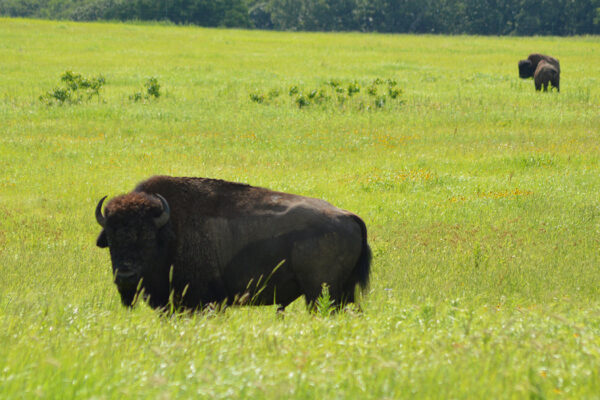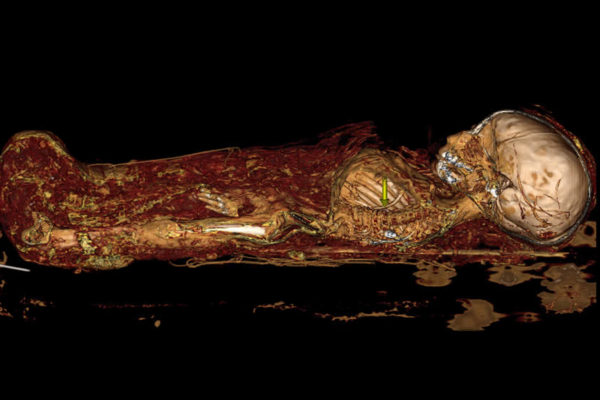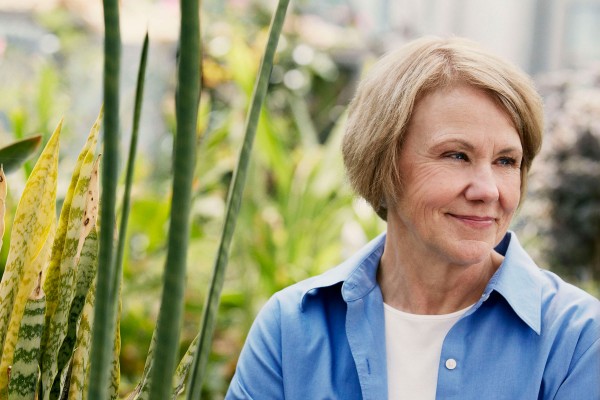As a curator of vertebrate paleontology in the NMNH Department of Paleobiology at the Smithsonian National Museum of Natural History, Anna K. Behrensmeyer, AB ’67, knows a lot about the past and how we study the past in the present. Over her 40-year career at the Smithsonian, she’s been a pioneer in the field of taphonomy, the science of how organisms become fossils.
“There is a bias in the fossil record caused by all of the factors that determine whether or not something becomes a fossil. Did it have hard parts? Did it die in the water where it could more easily be buried and preserved?” Behrensmeyer explained to Discover Magazine when it selected her as one of the “50 Most Important Women in Science.” Fossil records give scientists a very narrow window into the past. “My work tries to illuminate what we can see through that window.”
Behrensmeyer is known for making connections between environmental change and human evolution. She has found early stone tools and hominin footprints in Kenya, but she also ranges up and down in the rock record, exploring times long before humans. She is investigating Triassic reptile paleoecology in Arizona, Miocene mammal paleoecology in Pakistan and Pleistocene early human environments in the Turkana and Olorgesailie Basins of Kenya. She is also lead editor of the textbook Terrestrial Ecosystems through Time: Evolutionary Paleoecology of Terrestrial Plants and Animals, which reconstructs ecosystem evolution on land.
In 2019, Behrensmeyer was awarded the G. K. Warren Prize by the National Academy of Science for her work in fluviatile geology, and she was elected to the Academy in 2020, a high honor in the scientific field.
Behrensmeyer’s path to science started as a transfer student to WashU in 1964. She’d come from a small, private, all-girls college where she had been studying art. Now, she wanted to study geology. Despite it being a male-dominated field, particularly back then, Behrensmeyer was not the only woman in the WashU earth sciences department. There was also Dorothy Echols, a chain-smoking professor “with all kinds of colorful language,” who had come to the geology department from the oil industry. Echols was involved in the Deep Sea Drilling Project, discovered extinct species and genera, and won awards for her teaching.
“She was a little intimidating but also a good role model,” Behrensmeyer recalls. Echols, along with Professor Hal Levin, helped Behrensmeyer find her footing in the sciences — Levin even located office space for Behrensmeyer in the department so she could interact with the graduate students. Behrensmeyer received the E. A. Ohle Award in WashU Earth Sciences in 1967 — a Brunton compass for measuring the orientation of rock layers, which she has used throughout her career.
Though Behrensmeyer has expanded far beyond her early geological training, she says she learned how to be a “good scientist” at WashU. The experience set her up to go to Harvard for her doctorate in vertebrate paleontology, do postdocs at UC Berkeley and Yale, and teach at UC Santa Cruz. Despite her early start in academia, her heart was always in museum work.
“I always loved museums. The people who work at the Natural History Museum and the Smithsonian are really stimulating, and have so much exciting science going on.”
Anna “Kay” Behrensmeyer
“I always loved museums,” Behrensmeyer says. “As a research curator at the National Museum of Natural History, there’s a lot of freedom to pick and choose what you want to do. You can take on students and be involved in university classes.” Behrensmeyer has nurtured students through affiliations with George Washington University and the University of Arizona, Tucson. “The people who work at the Natural History Museum and the Smithsonian are really stimulating, and have so much exciting science going on — it makes my job as a research curator constantly challenging and fun.”
As a curator, Behrensmeyer works on exhibits — though that is only part of her role. Her most recent exhibit, “Deep Time” in the David H. Koch Hall of Fossils, opened in 2019, and took 10 years to complete. “I think there were over 500 people that were ultimately involved,” she says. Behrensmeyer, a mammal specialist, and two other experts on fossil plants and dinosaurs, along with a science educator and an exhibit manager, were the “core team” leading the project. Each of the three scientists had to conduct extensive research outside of their fields in order to bring everything together. “It was a huge network of idea exchange over time that created the final exhibit,” she says.
Aside from exhibits, field site research and teaching, Behrensmeyer also mentors other young scientists, especially women. As someone who has often been the only woman in the room, she knows the struggle.
“I have been in many professional situations where meetings are dominated by men,” Behrensmeyer says. “You can say things, and they just aren’t heard. Even if you do it fairly forcefully, 10 minutes later you’ll realize that one of the men has said something exactly the same, and then it’s ‘Oh yeah, let’s do that.’” Throughout her career, she’s had to learn how to “be heard and be effective.”
“I really just want to keep doing what I’ve been doing for as long as I’m able.”
Anna “Kay” Behrensmeyer
This is part of the reason she co-leads the Evolution of Terrestrial Ecosystems program. The group has biannual meetings where young scientists (of all gender identities) can collaborate. She recalls one of her graduate students finding a stronger voice in this supportive meeting environment. After three days of intense discussion, these aspiring researchers would go home “and have more confidence that what they wanted to do was valid and good science,” Behrensmeyer explains. The program lasted over six years for some of the people in this cohort. “You can’t just meet someone once and have an effective impact. It has to be sustained.” Now, young scientists from those initial groups are mentoring their own early career researchers.
Behrensmeyer has also helped her students and mentees get published. “If you look at my CV, the list of authors on my papers is getting longer and longer,” she says. But during the COVID-19 shutdown, Behrensmeyer has done more solo thinking, crafting a paper that coalesces many ideas from her long career at the intersection of geology, paleontology and environmental science.
“It’s been a challenge,” she says with a laugh. “I usually work with others, tossing ideas around and getting some of them shot down, then taking the ones that survive and writing up a publication.” She also has her sights set on going back to the field, and she hopes to return to one of her favorite field sites in Kenya for the 50th anniversary in 2025.
“For a geologist or paleontologist, having on-the-ground time in the field is very inspiring,” she says, “especially if it is with longtime colleagues and early career scientists. I really just want to keep doing what I’ve been doing for as long as I’m able.”




